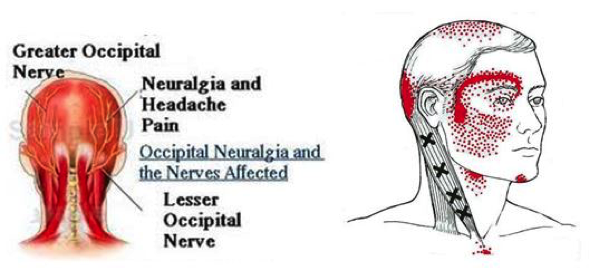Cervicogenic headaches are a type of headache that originates from the cervical spine (neck). These headaches are often characterized by pain that begins in the neck and radiates to the back of the head, temples, forehead, or behind the eyes. They can be caused by various factors, including:
- Neck trauma or injury: Whiplash from a car accident, sports injuries, or other trauma to the neck can lead to cervicogenic headaches.
- Poor posture: Prolonged sitting, hunching over computers or smartphones, and other activities that strain the neck can contribute to cervicogenic headaches.
- Neck disorders: Conditions such as osteoarthritis, degenerative disc disease, or herniated discs in the cervical spine can cause irritation or compression of nerves, leading to cervicogenic headaches.
- Muscle tension: Tension in the muscles of the neck and upper back can trigger cervicogenic headaches, especially if the muscles are tight or spasming.
Cervicogenic headaches can be challenging to diagnose because their symptoms can overlap with other types of headaches, such as tension headaches or migraines. A thorough evaluation by a healthcare professional, such as a neurologist or pain specialist, may include a physical examination, medical history review, imaging studies (such as MRI or CT scans), and possibly diagnostic injections to pinpoint the source of the pain.
Treatment for cervicogenic headaches typically involves a combination of approaches aimed at relieving pain, reducing inflammation, and addressing underlying causes. Treatment options may include:

- Medications: Nonsteroidal anti-inflammatory drugs (NSAIDs), muscle relaxants, and pain relievers may help alleviate pain and inflammation associated with cervicogenic headaches.
- Physical therapy: Exercises to improve posture, strengthen neck muscles, and increase flexibility can help reduce the frequency and severity of cervicogenic headaches.
- Chiropractic care: Spinal manipulation and other chiropractic techniques may help improve spinal movement and alleviate pressure on nerves, reducing cervicogenic headache symptoms for individuals.
- Active release Techniques: The premise behind using ART for headaches is that it aims to release adhesions and tension in soft tissues, such as muscles, tendons, ligaments, and fascia, which may contribute to headache symptoms. By applying precise pressure and movement to affected areas, ART practitioners seek to break up scar tissue, improve circulation, and restore normal function to the soft tissues of the head, neck, and upper back.
- Injections: Trigger point injections, nerve blocks, or steroid injections into specific areas of the neck may provide temporary relief from cervicogenic headaches by reducing pain and inflammation.
- Lifestyle modifications: Ergonomic adjustments, stress management techniques, and relaxation exercises can help prevent cervicogenic headaches by reducing neck strain and muscle tension.
It’s essential for individuals experiencing chronic or severe headaches, including cervicogenic headaches, to seek evaluation and treatment from a qualified healthcare provider to determine the most appropriate management plan for their specific condition.


